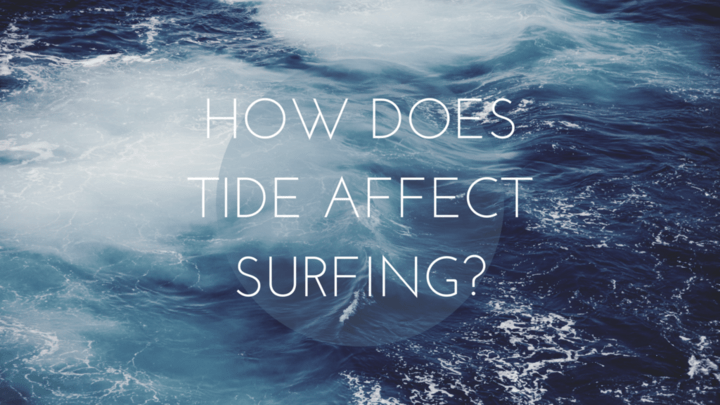The tide cycle is a constant flow as the sea level rises and falls twice a day on most coasts around the world. How this affects surfing, including your approach and the best times to take advantage of the tide, are all about understanding the science of waves.
Tide and Gravity

Tide is all about gravity and the pulling forces of the moon and the sun on the earth. The gravitational force exerted by the sun is about 200 times that used by the moon, but our planet’s nearby satellite has a more significant effect on tide due to its distance. As the earth rotates, the moon’s gravity pulls on different parts of the planet including both land and water. Of course, the pull on the ground is not substantial enough for anyone to notice, but we do see the pull on water. As the moon pulls the water, it bulges toward the moon causing one of the tides.
But wait, tides occur twice a day! Why does the second tide cycle happen? On the side of the earth that is away from the moon, inertia is responsible for the second cycle. Matter—water in this case—wants to keep doing the same thing until another force causes it to stop. So, as the water rises on the side of the earth nearest the moon, the sea resists change and rises on the opposite side.
Remember the sun is also exerting the force of gravity, but not at the same rate as the moon because of its distance. However, when the moon and sun are in alignment, they work together to cause the more extreme high and low tides that occur about every two weeks.
Wind and weather patterns can also have an impact on the tide, along with high- and low-pressure systems. Tides also vary in height and intensity and even the times that high and low tide occurs around the world because the earth is not a perfect sphere and because as there is variability to the earth’s rotation in relation to the moon.
Tide and Surfing

The daily tide cycle lasts 12 hours and 25.2 minutes from low to high tide and then back again to low tide. Knowing this and watching the moon cycles mean that you can use the tide to your benefit and find the best surf times each day. If the tide is too high and rising, each successive wave will push higher, while if the tide is high and falling, the energy in the waves will decrease with each wave. As the tide approaches low tide, the waves will be less powerful and flat.
The “Rule of Twelfths” allows you to estimate the high tide at any given time for the best surfing opportunities. Using tide charts, you will know the exact times for high and low tide. At the beginning of a tidal shift toward high tide, the waves will be slower and flatter, but as you approach the middle of the cycle, the waves will start to increase in intensity. Knowing this will help you time your next surfing session to have the best experience.
So, next time you look out across the coast and see the surfers lined up waiting for the “big one” think about this constant and unchanging natural cycle. It’s been unchanged for eons.
















